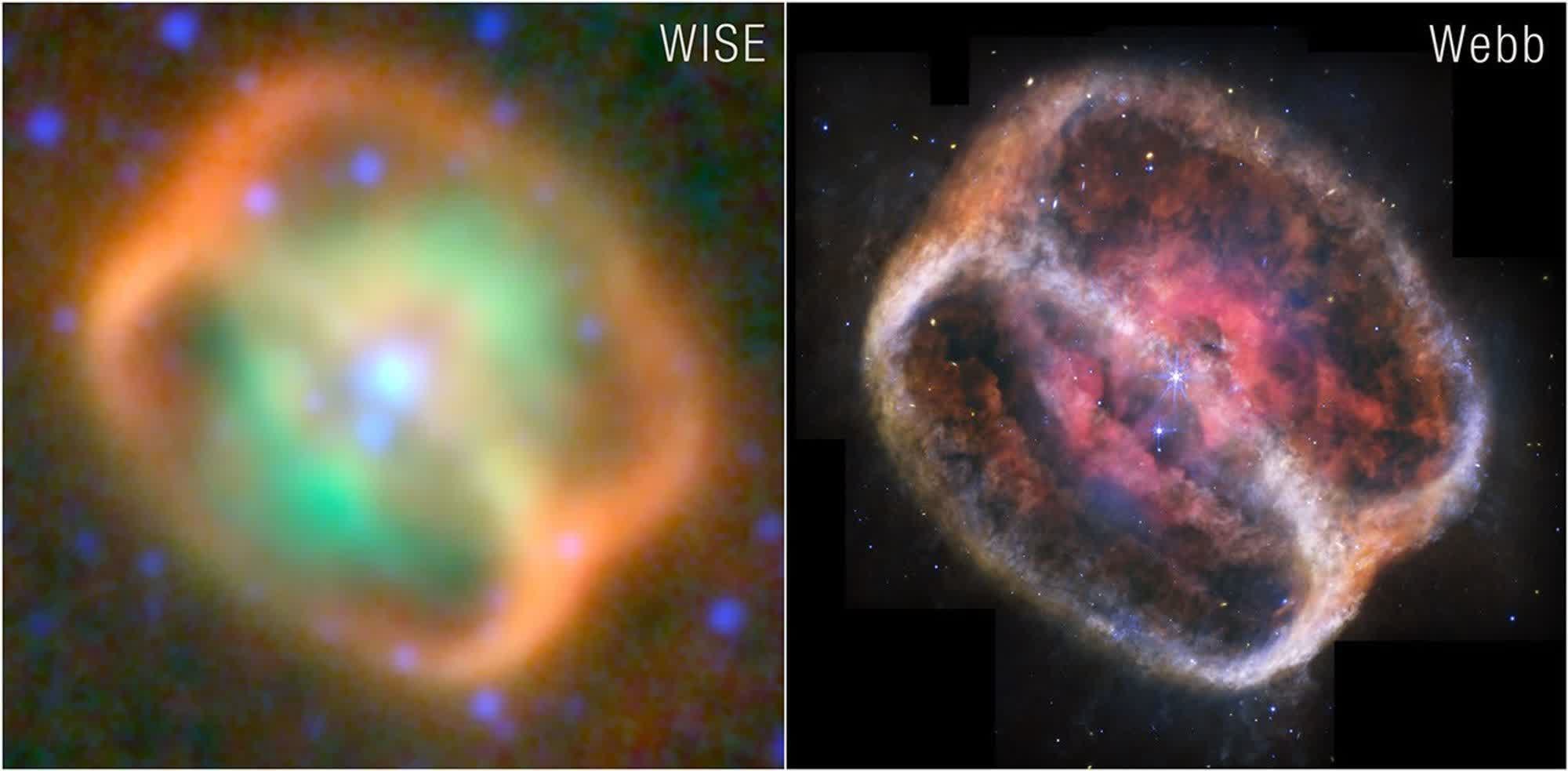James Webb telescope captures dual-ringed nebula in stunning detail
In context: Astronomers have been observing the wheel-shaped nebula NGC 1514 for over three centuries. In 1790, William Herschel described it as the first deep-sky object that looked cloudy. Unlike star clusters, he couldn't distinguish individual stars within it. Thanks to the Webb telescope, scientists are now studying the nebula in greater detail, leading to a better understanding of the interstellar cloud.
On Monday, NASA released stunning images of the NGC 1514 nebula, showcasing the most vivid depiction of its dual rings ever captured. The Webb telescope's Mid-Infrared Instrument (MIRI) provided the high-resolution composite, offering a clearer view than those from the Wide-field Infrared Survey Explorer (WISE), which only showed the rings in fuzzy detail. (See side-by-side image below.)
Astronomers have studied NGC 1514 since the 1700s, but in 2010, scientist Mike Ressler captured the nebula in the highest detail available at the time with WISE. He notes that the Webb images surpass those earlier captures, allowing him and his colleagues to study the nebula in greater detail. The improved clarity helps the researchers draw more accurate conclusions about the nebula's formation.
"Before Webb, we weren't able to detect most of this material, let alone observe it so clearly," said Ressler. "With MIRI's data, we can now comprehensively examine the turbulent nature of this nebula."
The equidistant rings, made up of clumps of dust, give the nebula its distinct three-dimensional shape, resembling a wheel or tire. While NASA describes it as an hourglass shape, that interpretation isn't immediately apparent. A pinkish cloud closer to the center reveals holes "punched" through it by faster-moving material ejected from a dying star. Researchers note that NGC 1514's rings have formed over the past 4,000 years and will continue evolving for many millennia.
The bright "star" at the center is actually two stars. David Jones, a senior scientist at the Institute of Astrophysics in the Canary Islands, proved that the NGC 1514 system is binary in 2017. The stars appear as one due to their close nine-year orbit, causing prominent diffraction spikes. One of the stars was once many times more massive than our Sun, but over thousands of years, it shed its mass to form the nebula, eventually becoming a white dwarf.
// Related Stories
"As it evolved, it puffed up, throwing off layers of gas and dust in a very slow, dense stellar wind," said Jones. "Once the star's outer layers were expelled, only its hot, compact core remained. As a white dwarf star, its winds both sped up and weakened, which might have swept up material into thin shells."
The researchers found that NGC 1514 is missing some elements typically found in nebulae – most notably, carbon. Specifically, it lacks polycyclic aromatic hydrocarbons, a complex form of carbon commonly seen in similar formations. They suspect these molecules didn't have time to form, possibly because the binary stars' elongated orbit acted like a blender, disrupting the ejected material. However, the Webb telescope did detect oxygen in the dust, concentrated around the edges of the holes in the pinkish cloud.
Another bright star appears to the lower left of the central binary, but it isn't part of the system. The NGC 1514 nebula sits roughly 1,500 light-years from Earth, while this third prominent object lies much closer. Its relative dimness underscores just how luminous the nebula's binary stars are by comparison.


